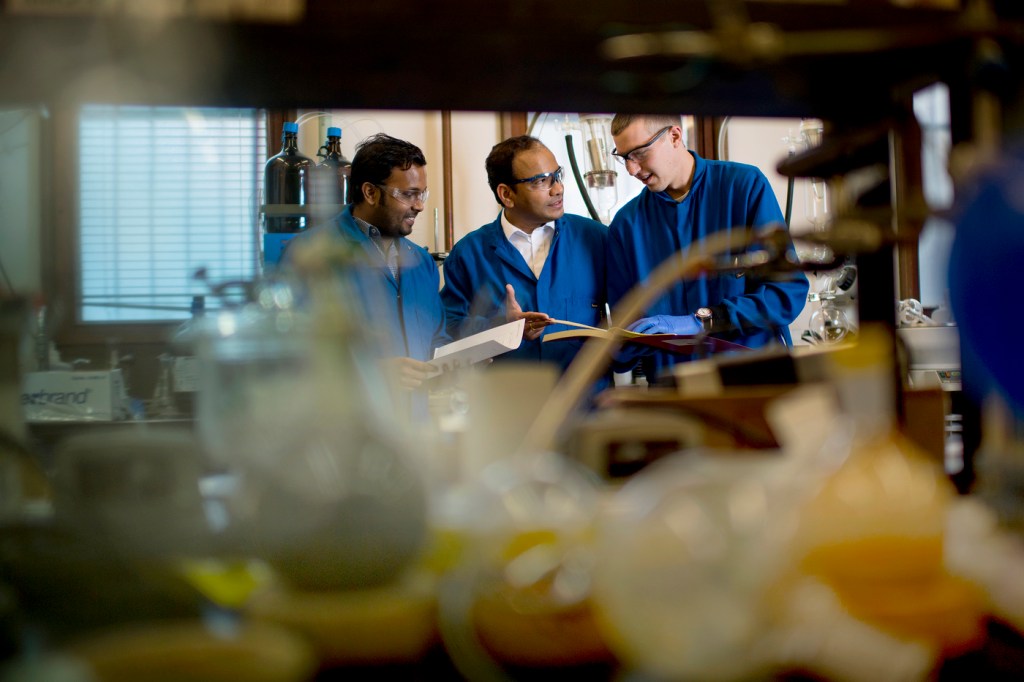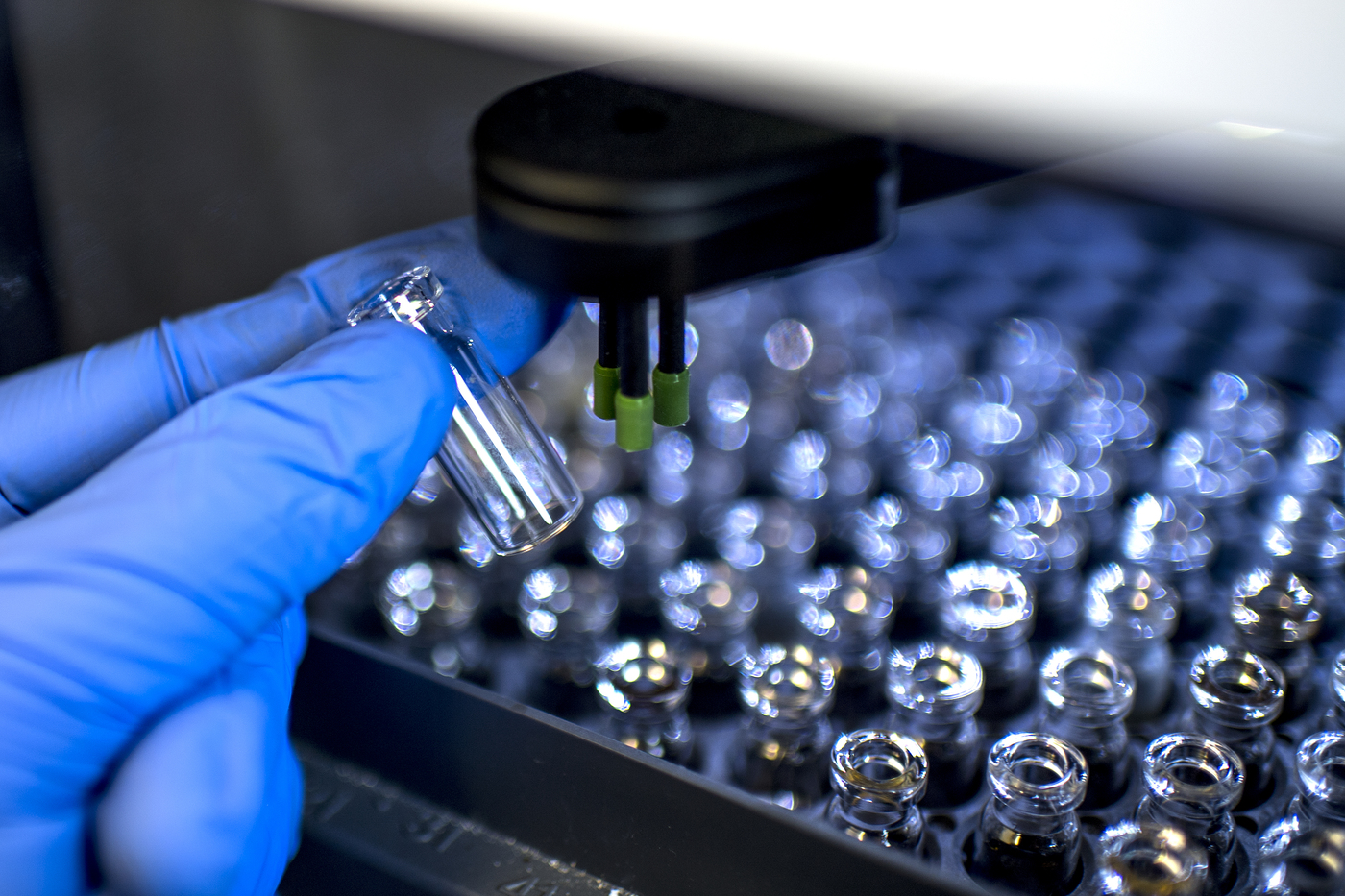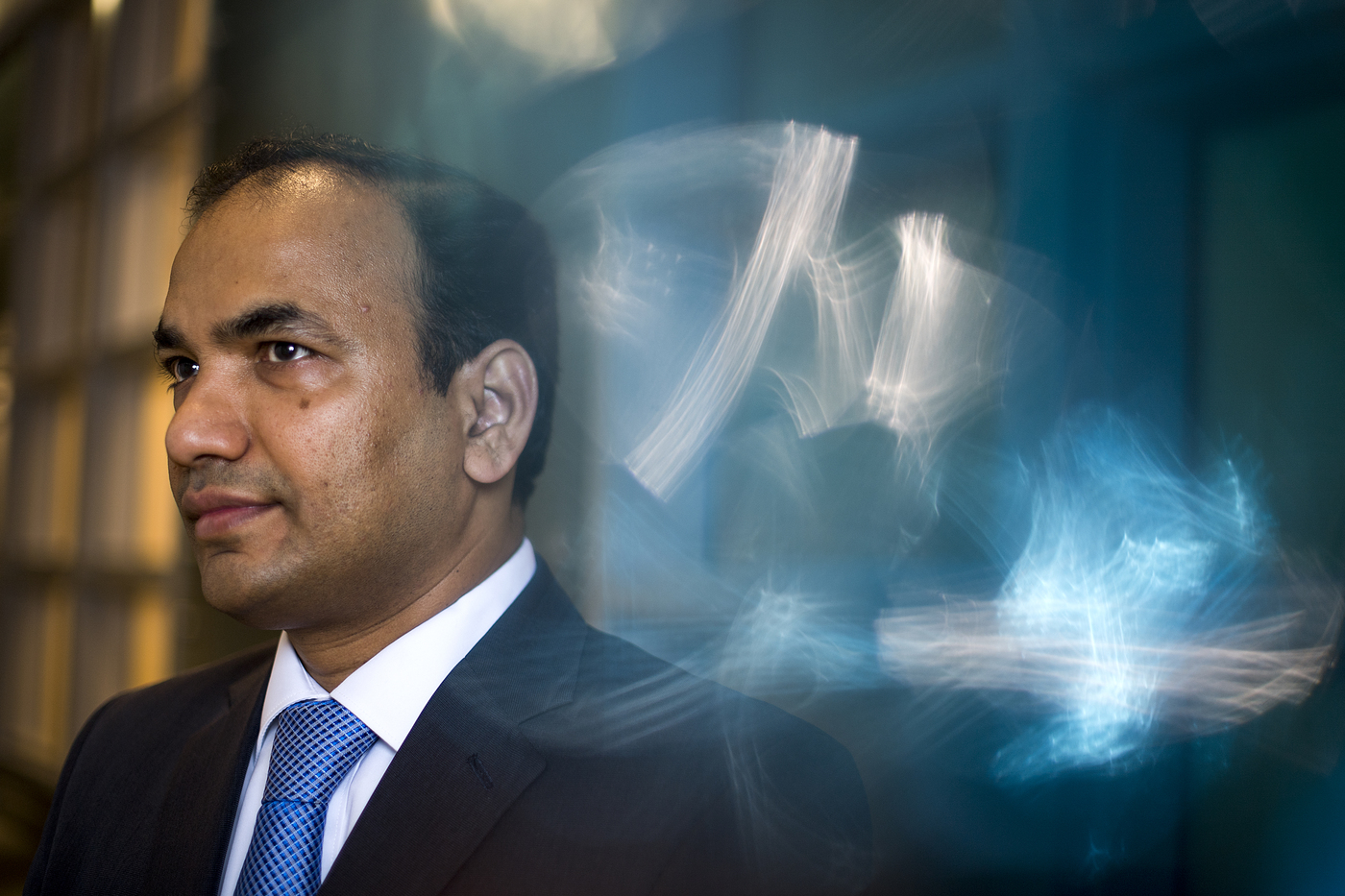Northeastern University researchers are looking for a drug to stop the opioid epidemic

More than 70,000 people in the United States died from drug overdoses in 2017. The majority of those deaths were linked to opioids.
This number has been rising for the past two decades and shows no signs of slowing down. Opioids continue to be prescribed as pain relief for everything from cancer to dental work, putting more patients at risk of becoming addicted.
Ganesh Thakur, an associate professor in Northeastern’s Department of Pharmaceutical Sciences, is hunting for a way to stop this epidemic. He has created a chemical compound that could enhance the body’s own ability to relieve pain without putting patients at risk of becoming addicted.
Most overdose deaths involve opioids, specifically synthetic opioids
Among the more than 72,000 drug overdose deaths estimated in 2017, the sharpest increase occurred among deaths related to fentanyl.Source: National Institute on Drug Abuse. Data visualization by Lia Petronio/Northeastern University.
Thakur drew his inspiration from the pain-relieving effects of another drug: marijuana.
Cannabis has been used to relieve pain and reduce inflammation for thousands of years. But these effects are short-lived and come with a variety of well-known side effects, such as changes in mental state, increased appetite, and, in some people, addiction.
Thakur has been researching synthetic ways to replicate the beneficial effects of marijuana without prompting the negative side effects.

Researchers in Thakur’s lab are developing pain medications that are safe and effective alternatives to opioids. Photo by Matthew Modoono/Northeastern University
“If you can develop a compound that gives you the same positive effects, but no high, no dependence, and you don’t have to smoke it all the time,” Thakur said, “you can have an effective medication.”
The chemical compounds in cannabis, called cannabinoids, bind to complex proteins that are woven into the walls of our cells. One of these proteins, the cannabinoid type 1 receptor or CB1, is especially prevalent in our brains. When cannabinoids bind with CB1 receptors, they trigger a series of signals that lead to marijuana’s myriad effects.
But Thakur didn’t need marijuana to trigger CB1 receptors. Our bodies already make cannabis-like compounds, called endocannabinoids, that bind to CB1 receptors and cause similar responses. Thakur simply needed to find a way to separate out these signals and boost the ones that relieve chronic pain and pain associated with nerve damage, known as neuropathic pain.
“You want to have precise control—to turn up this signal from activating the CB1 receptor, and turn down that signal,” Thakur said.
Instead of looking at the main binding sites where cannabinoids attach to CB1 receptors, Thakur developed compounds aimed at secondary binding sites called allosteric sites.
When a cannabinoid attaches to the main binding site, it acts like a light switch, flooding the body with signals. When Thakur’s synthetic compounds attach to an allosteric site, they function as dimmers or boosters for that main switch.
These compounds, called allosteric modulators, are changing the shape of the CB1 receptors, locking them into formations that favor certain signals over others.
“When you give something that is not competing but assisting, to strengthen the signaling, it has a miraculous effect,” Thakur said.
Thakur holds several patents on the class of compounds that act as allosteric modulators for the CB1 receptor and was recently honored by the Boston Patent Law Association.

Associate professor Ganesh Thakur. Photo by Matthew Modoono/Northeastern University
In his lab at Northeastern, Thakur has created allosteric modulators that enhance the pain-relieving signals sent out by CB1 receptors. In a paper highlighted by the National Institutes of Health earlier this year, researchers at Indiana University Bloomington worked with Thakur to show that one such compound was effective at relieving inflammatory, neuropathic, and chronic pain in mice. The mice showed no sign of becoming addicted or needing a higher dose after prolonged use.
According to the Centers for Disease Control and Prevention, more than 17 percent of Americans filled at least one opioid prescription in 2017. The average person in that group filled 3.4 opioid prescriptions. If Thakur’s allosteric modulator can be made into an effective drug, it might replace many of these prescriptions and head off new addictions before they start.
Percent change in death rates involving prescription opioids from 2015 to 2016
Note: Percent increase in opioid overdoses by state adjusted for population and age. Drug overdose deaths that have natural and semi-synthetic opioids and methadone as contributing causes.
Source: Center for Disease Control and Prevention. Data visualization by Lia Petronio/Northeastern University.
But what about the millions of people already suffering from opioid addiction? Thakur has a plan to help them, too.
Thakur believes he can use the same mechanism to assist addicts in breaking out of the addiction cycle. The right allosteric modulator could be used to turn down the signals that drive addiction, making addicts more receptive to other treatments.
Thakur’s lab has already had some success using this method to target alcohol addiction. He hopes to do something similar for opioids.
“If I can develop one safer and effective drug for treating pain and one for treating opioid addiction, I think it will be a big contribution to our society,” Thakur said. “There is a lot of hope here.”
For media inquiries, please contact media@northeastern.edu.





